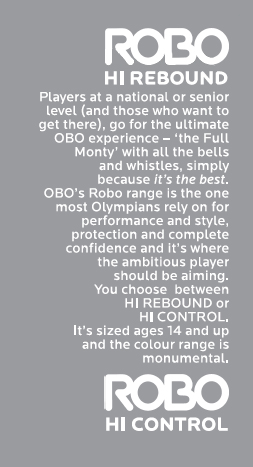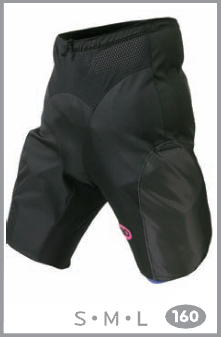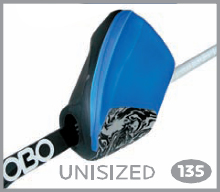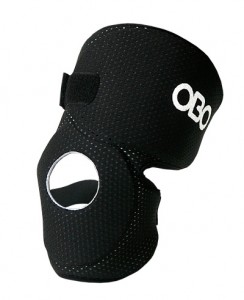
Download the fact and feature sheets below;

ROBO waterproof mesh overpants

ROBO hi rebound right hand protector, page 1 (5.80 MB)
ROBO hi rebound right hand protector, page 2 (5.82 MB)
Keepers Resources
ROBO Fact and Feature Downloads.

Download the fact and feature sheets below;

ROBO waterproof mesh overpants

ROBO hi rebound right hand protector, page 1 (5.80 MB)
ROBO hi rebound right hand protector, page 2 (5.82 MB)
OGO Fact and Feature Downloads.

To change your log-in password;
1.Go to your “Profile”
2. scroll down to “New Password”
3. Type your new password in twice then “Update Profile”
Please click the image below to view the flash presentation.
[HTML1]
Welcome Amazing Goalkeeper,
Thanks for joining us on the OBO Keepers Resources 2.0. We have worked hard to provide you with a new improved goalkeepers resource that will enable you to share what you find, contribute your knowledge and learn from other keepers all over the world on playing better and having more fun!

If this is your first time to OBO Keepers Resources we strongly recommend you view the flash presentations located on the links below to familiarise yourself with how the website works;
Basic navigation of the Keepers Resources Website
How to Use the Keepers Resources Dashboard
How to add a new post/ article to this website.
Some other posts that may be useful are:
How to change your Log In Password
How to get your own custom Avatar
We are not big on rules around OBO, in fact we have broken a few in our time. But please; keep it positive never negative, keep it helpful never personal and always show respect.
Cheers,
Simon B

Alistair McGregor is the current Loughborough Students and Great Britain goalkeeper. As an OBO sponsored player has requested to test out the Knees Up knee protector…here is his review:
“I have been using the knee pads for the past few months now and have been very impressed by them. I got a direct hit off them during a shooting session, obviously at the time the initial impact still hurt, however i was able to continue with the session. Having been hit on the knee before with other knee pads i have suffered a bit of stiffness from the impact. I feel that with the OBO knee pads that the stiffness from the injury was far less and only received a very small mark were the ball hit me. The foam in the knee pads seemed to dispel a lot of the impact of the shot. I fully appreciate that the thickness of the foam is difficult to get right, i feel that this is very close to being an excellent knee pad. The knee pads sit well with the shorts and the open knee area helps to keep them in place. A possible addition could be a plastic/harder thin material inside the knee pad to provide even greater protection.”

” The knee pads do hold the water quite a lot when wet, however overall I have been very impressed with the knee pads and will be using them in the Olympics. I feel that the knee pads give me that little bit of extra confidence when facing some of the hardest hitters of the ball in the world.”
Thanks for all your support,
Ali

CRASH TEST: The air cannon used in impact testing at the OBO laboratory in Palmerston North.
The Antipodean collider is actually a form of air cannon used in testing helmets, face masks and other protective gear developed by the Palmerston North-based sports equipment manufacturer, OBO.
OBO is now well into the design and prototype construction stages of developing a new mask, for which the company has received a boost of $217,000 from the Foundation for Research, Science and Technology.
Company founder Simon Barnett said the mask is able to take a direct frontal hit from a ball spat out by the cannon at 160kmh.
He said OBO wasn’t interested in mass- producing “one size fits all” helmets or masks, but preferred to concentrate on smaller, niche markets with equipment designed for specific purposes.
The initial focus was on face protection for players in cricket, softball and hockey and Mr Barnett and his company are high in their praises of goalies everywhere and believe the security their masks offer boosts confidence.
The new mask fits the niche market philosophy well.
For example, OBO has protective gear designed specifically for hockey goalkeepers, and for softball pitchers and cricket wicketkeepers.
“In hockey we have existing face protectors for short-corner protection and during the running phase of the game, but we wanted to improve on it,” he said.
A need was identified for frontal face protection without “the full drama and protection of a helmet that just adds weight and heat.”
Mr Barnett was particularly critical of cricket face protectors which “gave” sufficiently to allow serious injuries such as that suffered by Black Cap Daniel Flynn last year.
OBO’s new mask, being developed in association with designer Rob Whitfield, employs materials and features about which the security- conscious company is not saying much at this stage.
However, the first of the helmets should be ready for assessment by sportspeople in March next year. The company will then consider this last-minute advice in any fine- tuning before going into production.
Mr Barnett said the prototype of the mask offered good visibility – “almost complete peripheral vision” – and because of the materials used and shapes and angles of the parts, could withstand a direct frontal hit from a ball travelling at 160kmh.
The air cannon in the developmental laboratory was coupled with a camera capable of taking 20,000 images a second, allowing a detailed analysis of the actions of ball and mask under impact.
So impressive has the mask been to date that possible applications have emerged in police riot gear.
But Mr Barnett said any police application was “further down the track” and would involve designing a new helmet under the company’s purpose-build philosophy.
OBO began in 1994 with a dedicated range of equipment for hockey goalkeepers under its own brand name. Although global expansion had been rapid, OBO had not forgotten its origins, said Mr Barnett.
“Almost all of our production is still done in Palmerston North.”
Via www.stuff.co.nz
Media release, 7 May 2008, Nightside Test Design Ltd, Christchurch, New Zealand: Christchurch based company test engineering company Nightside Test Design is showcasing slow motion video clips of their latest vision and data project at the EMEX trade show currently running in Auckland, demonstrating the impact of cricket and hockey balls on standard sports helmets.
Media release, 7 May 2008, Nightside Test Design Ltd, Christchurch, New Zealand: Christchurch based company test engineering company Nightside Test Design is showcasing slow motion video clips of their latest vision and data project at the EMEX trade show currently running in Auckland, demonstrating the impact of cricket and hockey balls on standard sports helmets.
Nightside’s managing director, Peter Brown, says the sports equipment test laboratory recently completed for Palmerston North manufacturers OBO is designed to reduce the number of head injuries among players of ball sports.
OBO specialise in protective equipment for field hockey goalies and have a 65% share of the world market, exporting to 61 countries.
“In the last fifteen years, the speed of balls being hit, thrown or bowled at players has increased exponentially, as a result of the improving technologies involved in surfaces and materials in bats, racquets, and hockey sticks.
“We have also seen a number of serious head injuries to sportspeople resulting from balls hitting the head at high speeds.
“Unfortunately the technology around testing to make sure protective helmets are up to par has not increased at the same speed – until now,” Brown says.
The new OBO test laboratory will start to address the issue, by providing a state of the art facility equipped with a high speed video camera and sensor equipment that captures and analyses the impact of balls shot by a high pressure cannon at up to 160km/h towards a test dummy head.
The shock attenuation of the impact is recorded frame by frame by the high speed Mikrotron video camera and other sensors at over 2,000 frames per second, allowing highly detailed analysis of the data and images around the impact zone.
To date, most similar testing has been limited to the automotive industry (using crash test dummies) and the military sector and is specific to the requirements of those industries.
Reuben Parr from OBO says the system has been very successful to date in testing a range of helmets and masks from different sporting codes, including cricket, softball and field hockey.
Results show a large difference in the performance of different products and different materials, for example, polycarbonate face masks proved to be far stronger than steel wire face masks used in a number of sports.
About OBO:
New Zealand manufacturer and exporter OBO is in the business of making protective gear for field hockey goalies. Based in Palmerston North, the company designs and manufactures a range of padding, masks, helmets, sticks and protective clothing primarily made from closed cell polyethylene foam.
OBO currently has more than 65% worldwide market share, exporting products to 61 countries.
More about OBO and their product range can be found at www.obo.co.nz
About Nightside Test Design Founded in 2001, Nightside Test Design provides independent embedded software test solutions as an alternative to having an in-house testing department. Accurate and timely testing can help streamline the development cycle while improving time to market, product reliability and efficiency. Nightside’s professional services cover the full product development lifecycle from design to production, including Software Testing, Production Testing, Embedded Development, Industrial Control, Measurement and Data Logging. Nightside is a member of the National Instruments Alliance Partner Program – an international network of consultants, systems integrators, and product developers that help bring NI technology to new applications and markets.
As one of only two Certified Alliance Partners in New Zealand, Nightside uses NI LabVIEW, LabWindows/CVI, and TestStand, along with the NI data acquisition and control hardware to provide automated solutions for manufacturing production test applications. Nightside Test Design’s range of services and products can be found at
BY IAN TAYLOR; ONE TIME GOALKEEPER
I thought it would be interesting to pen a few personal thoughts on the union, the great and the good and how it appears through an “old mans eyes”
The noble art of keeping is changing as it ever has, each generation adapting, creating new skills, techniques and styles. This does not mean that everything has changed completely, although some goalkeeper coaches believe they are creating some new form of mystique art, like all skills it is the philosophy and the psyche that determine the outcome.
Physical preparation and drill practices enable the keeper to choose from a range of skills and deliver a result, choosing the correct skill in each circumstance separates the great goalkeepers from the good. Many of us have seen numerous keepers making great saves in practice but seemingly unable to produce on match-days. Like all sports it is the decision making that makes the difference and this will develop from the philosophy of the keeper, the coach and the team.
If the keepers role in the game is seen as “to stop the opposition scoring” then he ( and his team) will always struggle to over-achieve. As stated to young keepers ” what other position on the field is there, where the opposition deliberately try and hit /flick the ball in your direction”, so what are you going to do with it when arrives- be the first move in your own teams next attack. The Positive not the negative, where are your players to pass to, where can you deflect the ball that will in % terms be more likely to be retrieved by one of your players, and does your own team know where the ball is going to rebound to.
I have watched International keepers in practice, club and International matches and from the sidelines it appears that many keepers themselves do not know the options available to them they merely react -the negative .By just reacting they are not controlling the situation, in past generations this may have been described as dominating the D.
No I am not an old man who comes out with “in my day” sentiments, I have seen a number of keepers who have dominated the game at their time I just don’t see too many around to-day (perhaps I am just not watching so many games although I have watched the last four Olympics as a BBC commentator or private individual and watched a fair amount world Cup matches and English national League games).
The equipment is brilliant now and gets better year by year. Companies such as Obo have invested heavily in product and people development and set a fantastic philosophy around this unique position of “making Goalkeepers Great”
Too many keepers to-day seem to have fundamental faults or weaknesses – badly balanced, who collapse too easily and who consequently fail to dominate their own game, the D and subsequently the opposition. Who can change this the coaches not enough specialist keeper coaches, and team coaches not fully understanding how to integrate keepers into practices or drills that take a keeper and defence through 1st, 2nd and third phases. Keepers new and old have to help the coaches help themselves.
And so to the next “great keeper” whoever he or she may be, one with all the physical attributes and skills of some of our current keepers but with the knowledge and presence to dominate, that decision making ability that separates them from the rest.
I work in the world of Professional Rugby, by comparison “what am I rambling on about above” Dan Carter, where is the Goalkeeping Unions version of Dan.
I very much forward to watching the individual, the coach, the club and the country that embraces this simple philosophy then again maybe this is just an old man rambling
Ian Taylor
Olympic Bronze medallist 1984
World Cup Silver medallist 1986
Olympic Gold medallist 1988